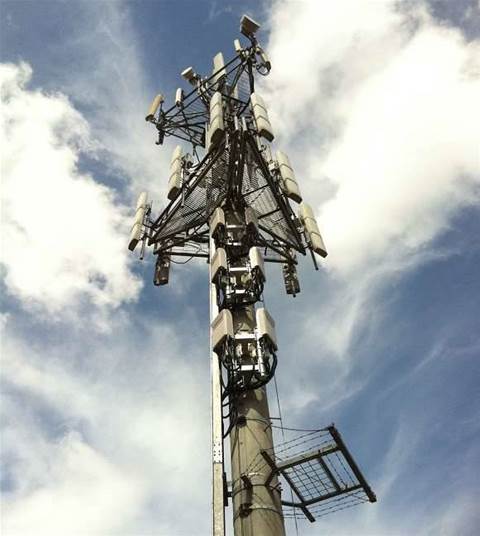The Australian Communications and Media Authority has published a final set of terms, conditions and prices for the auction of spectrum for future mobile data services, and given mobile carriers until January 24, 2013 to be part of the action.
Today the ACMA set a reserve price of $0.03 per MHz per head of population for the auction of the 2.5 GHz band.
Communications Minister Stephen Conroy had previously set a reserve price of $1.36 per MHz per head of population for the “waterfront” 700 MHz band, which has to date been used for the provision of analogue television services. Telcos have labelled the price as “unworkable”.
The two bands up for auction – the 700MHz band (nine lots of 2 x 5 MHz between 703MHz and 803 MHz) and the 2.5 GHz band (14 lots of 2 x 5MHz between 2500MHz and 2690MHz) – will go under the hammer in April 2013.
The bands are being auctioned together as the former provides excellent range and penetration within buildings and the latter provides extra capacity in highly populated areas such as metropolitan cities (Canberra, Adelaide, Brisbane, Darwin, Hobart, Melbourne, Perth and Sydney). The latter also includes three bands for additional capacity in regional and remote Australia.
Telcos will bet in a combinatorial clock auction format for spectrum licenses that last 15 years from January 1, 2015 (for the Digital Dividend band), October 1, 2014 (for most of the 2.5 GHz band) or February 1, 2016 for two unique lots within the 2.5 GHz band in Perth and regional Western Australia.
The Minister has also set ‘spectrum caps’ or ‘competition limits’ at 25MHz of paired spectrum (50MHz total) in the 700MHz band and 40MHz of paired spectrum (80MHz total) in the 2.5 GHz band. This means that no single carrier can be licensed for more than 55 percent of the 700 MHz band or 57 percent of 2.5 GHz band.
Today the ACMA released documents [pdf] that revealed the minimum revenue the Government could expect to earn if telcos meet these reserve prices.
The reserve price for the digital dividend band would generate $311 million per lot, which would earn the Australian Government a minimum of $2.8 billion, plus close to $7 million for the 2.5GHz band.
Telcos must pay a non-refundable application fee of $25,000 by January 24, 2013 to bid for any of the spectrum. By March 21, 2013, they will also be asked to pay refundable “eligibility fees” (roughly one-tenth of the reserve price for the Digital Dividend spectrum and half the reserve price of the 2.5 GHz band). These fees are only refunded if the bidder wins no spectrum.
The ACMA has also been granted the right to withhold eligibility fees if it feels bidders have colluded or breached confidentiality rules. The Auction guide [pdf] warns telcos not to collude on price to rig the auction, and the regulator will seek signed disclosures from each party to this affect before bidding begins.
Parties found to have colluded have been warned that they can be stripped of the spectrum they successfully bid for.
The Auction Guide also states that the ACMA can vary its terms and dates at any time should the process not meet the Government’s requirements or should there be delays in ‘clearing’ existing use of the 700 MHz band (i.e. if broadcasters have not yet moved off the spectrum). The regulator will advise what it intends to do with any unsold spectrum after the auction process is completed.
Should television broadcasters free up digital dividend spectrum earlier than expected, winning bidders will be able to write to the Minister for Communications to get their slice of the action earlier.
Bids for spectrum will be made online using 128-bit SSL-encrypted messaging on a web site protected using a username and password supplied by the ACMA.
The ACMA asked that bidders ensure they are have installed the latest updates for their operating system and browser “to maximise protection against potential security vulnerabilities”. They have also been asked to immediately inform the ACMA of any data breach encountered during the auction process.





.png&h=142&w=230&c=1&s=1)
.jpg&h=142&w=230&c=1&s=1)






.jpg&w=100&c=1&s=0)










